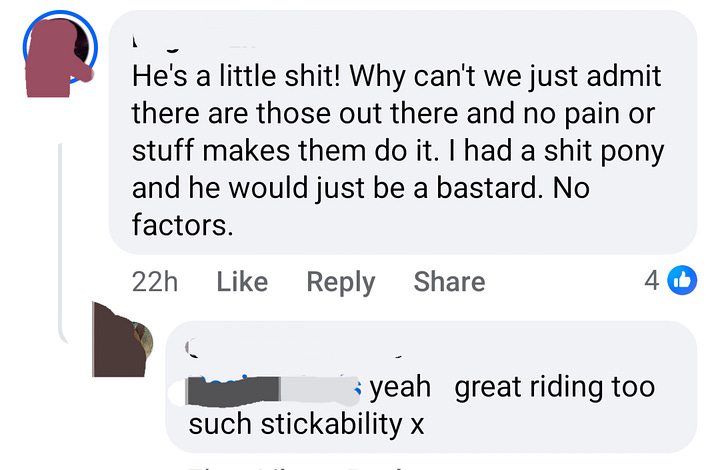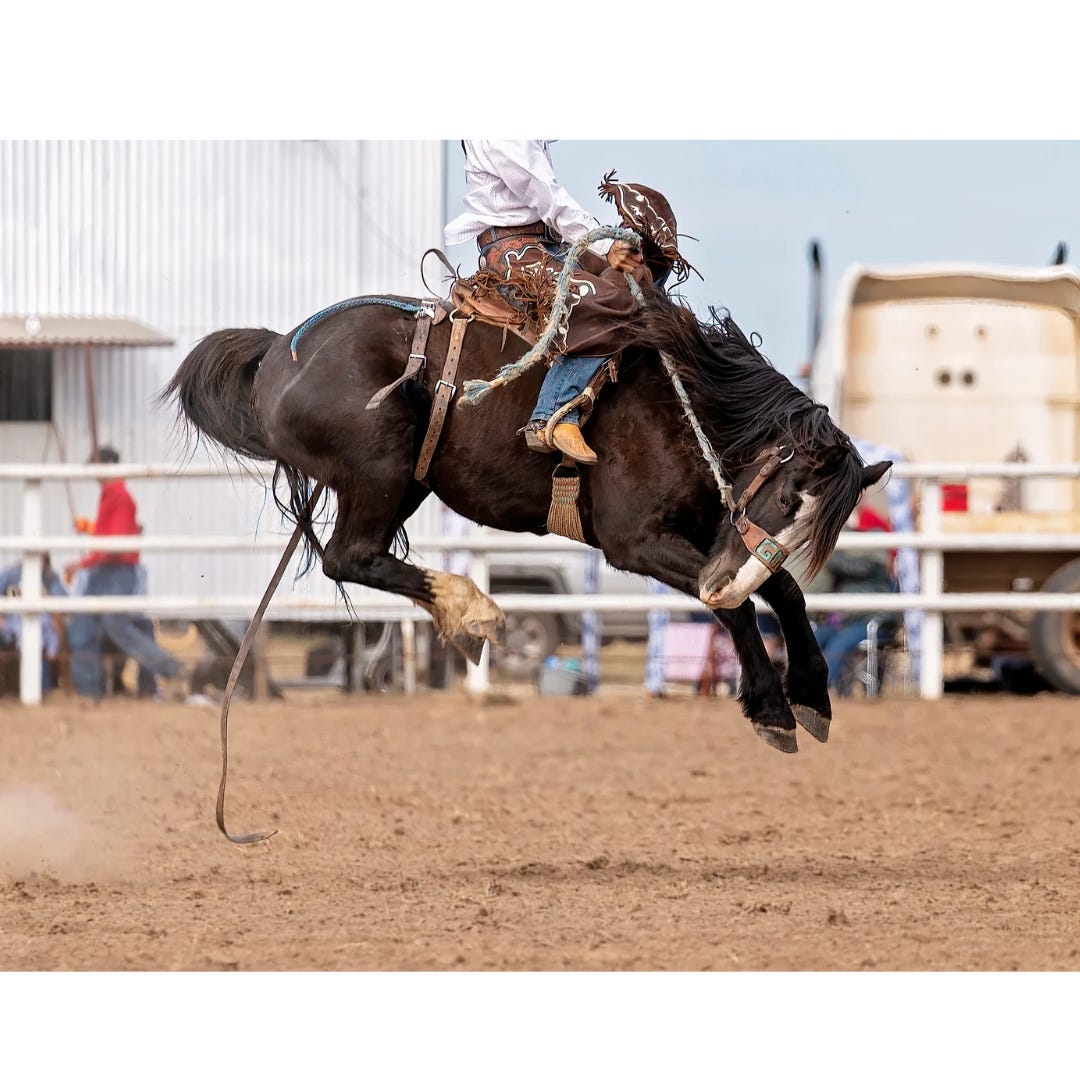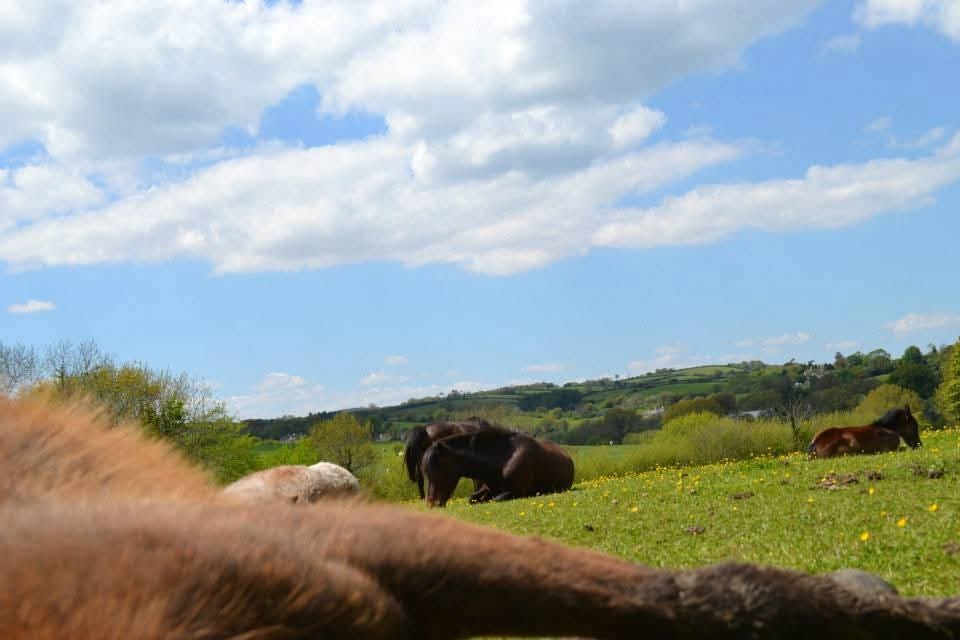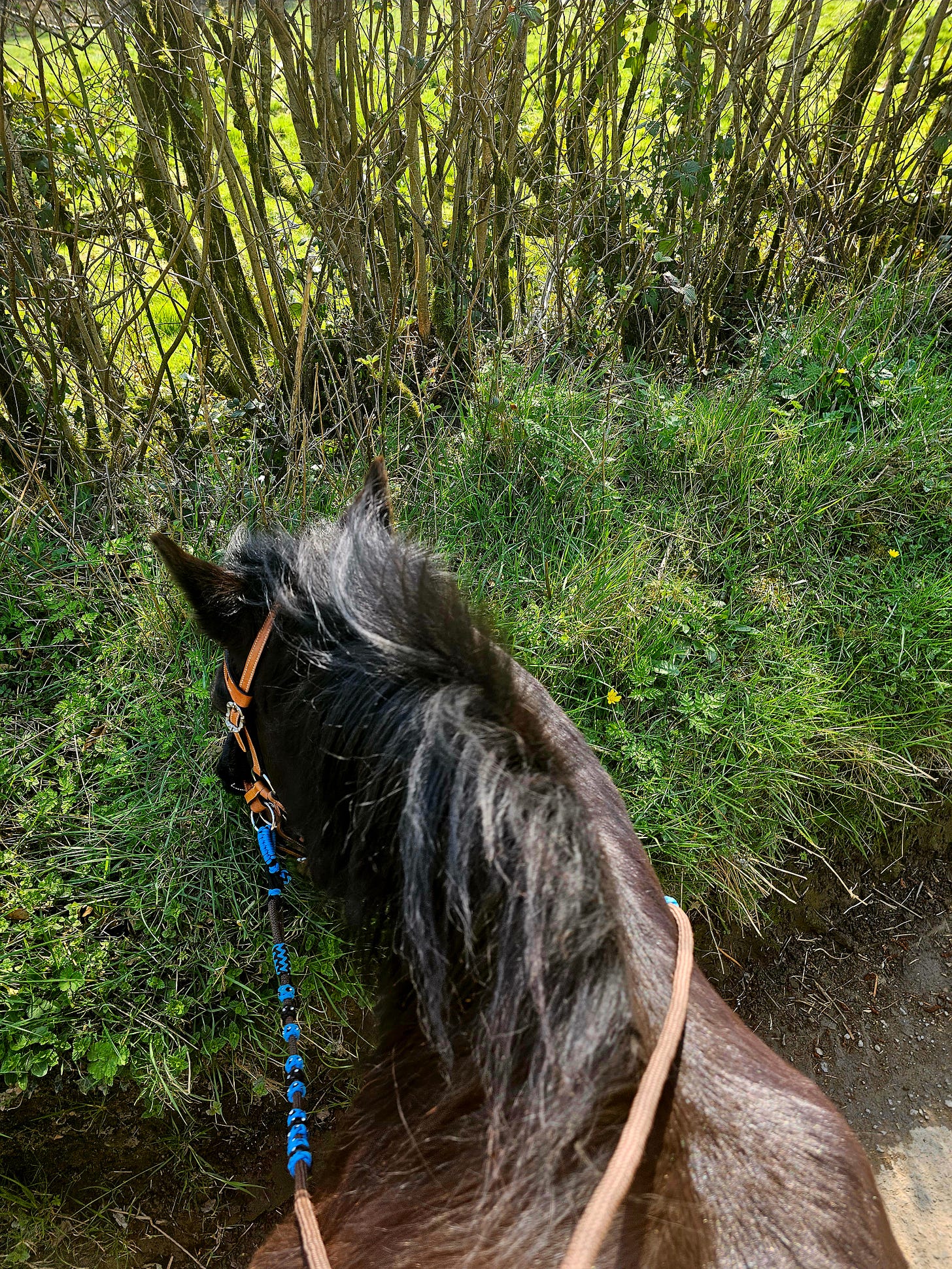Having written a blog to appease my want but reservations of commenting on posts about ¹horse racing and the racing industry, I've got another ²horse welfare peave I want to delve into:
Reels of horses broncing... and just how many people think it's ok, have similar at home and shoot down anyone who dare to ask if the horse has had a vet, teeth and tack check.
I will start by saying I am no training expert! I write based on my experiences as a horse lover & rider. I have ridden since I was aged 7. I worked at a racing yard. I ran a Dartmoor rescue training feral foals and rehoming them. I've owned horses from a 10.1hh Dartmoor Hill Pony to all 18.2 dressage horse. I worked as an equine healer and studied horse behaviour. I've trained in some of Linda Kohanov Epona methods. I am not a trainer, or even a good rider. I love horses and I want the best for them all.
Horses can and will buck in excitement, and to help rebalance as they change gaits. This is very normal and something a rider can hopefully work through. I've seen young horses buck when transitioning into canter as they learn how to move and hold themselves and the rider in balance. I used to ride a 5 year old Welsh pony who always had a few bucks before we took off across the village green, she was excited and as she got older she calmed down and grew out of it.
There's a big difference between an over excited in the moment bucking, and pain/ fear bucking, which mostly looks like what I'll call broncing (but not always). I believe if things are done right ³broncing should never happen. It's what you see in the cowboy rodeos and their way of ⁴"breaking" the horse to saddle. I.e. stick a saddle on and let them bronc it out, stick a rider on and let them bronc it off - watch a rodeo when they get on an "unbroken" horse and see the way it moves, this is often a sign of a horse in pain and/or fear.
There is no need to put a horse through this to train them. There's much calmer and gentler methods, but probably more time consuming which is why people choose not to use them - time = money lost. I'd rather not have a horse whose first training was based on fear.
I went to a horse training demo about 15 years ago, you know the ones where they will teach a non loader to load in 15 minutes and come up with many other quick fixes for behaviour problems. Another pet peeve of mine, quick fixes, we need long term permanent fixes which often means training the owner, anyway I digress!
As part of this demo there was a huge grey gelding who bucked when ridden. I'd never seen anything like it, the rider got on and he bronced until he was exhausted. It was horrendous and I still feel emotional about it now. An anti bucking device was added, it seemed to attach over the horse's gum under his top lip. This horse continued to pass wind throughout, it's stomach was going crazy and I've never smelt anything like it, it filled the arena, to me it was the smell of fear. The demo continued when it was blatantly obvious more was going on here. There was a backlash after the demo and the horse was bought by some people there and discovered to have various physical issues. There are NO quick fixes when pain is involved. The excuse used for not doing the medical checks before the demo was that if they hadn't tried he was due to be shot the next day. If ever there was an example of why medical checks must be done first this is it. My heart broke for that horse, in pain and forced to be ridden surrounded by us all watching in his most vulnerable moments. Am I anthropomorphizing ? Maybe a little but it's not far fetched for what that horse went through.
My pony Tigger had an awful first handling experience and it lives with him 19 years on. We've worked around it, I've found our way but there's still an edge. Some horses will move on and get over harsher training methods, unfortunately some live with it forever.
Something else to consider when dealing with a bucking horse is whether there are any other signs? Broncing to me is an obvious indicator that there's a big problem, but what about the ones that buck a little, what else are they showing? Are they continuously disunited in canter, are they flicking their tail about, what position are their ears in, how does their face look? ⁵You can tell so much from the face - the eyes, nostrils, ears and general tension. Have a reputable trainer have a look if you're unsure.
Of course every horse is different. It's up to us to ask the questions and reasses when something changes. Unfortunately this isn't always simple, and rarely cheap and this is why we see so many obvious signs being ignored, and deluded people arguing it's ok, the horse is just trying it on. Are they really trying to convince themselves to justify ignoring their own horse's behaviour?
When we do investigate and find medical causes we then have to make some difficult decisions. These can be huge like deciding to retire the horse. Or you may choose a kissing spine operation which means you need to commit to full rehab. Or you may discover ulcers, get them treated but nothing changes? Why is that? You probably need to rescope to be sure they have gone, but also maybe you need to change management of the horse to prevent reoccurrence, why does the horse have ulcers in the first place? If the cause hasn't been taken away they may well return. Racehorses often have ulcers and once treated and settled in a new home they will heal. Other horses may be stressed by the way they are living and need to be managed in a different way. I've seen this with a client's horse. He was stabled at night and turned out alone in the day. Ulcers were treated but reoccurred. When his management was changed to turnout with other horses he relaxed, he started laying down and sleeping. I remember my second visit and his owner said I've never seen him lay down, it's amazing. Never underestimate what a lack of ⁶REM sleep can do to a horse, and to have REM sleep they need to lay down, to lay down they need to feel safe. Solutions aren't always easy, and may even require a yard move to find the right solution.
I sometimes watch ⁷Sophie Seymour's videos. Though I'm sure we have differing opinions on some things, I do like how she seems to be very good at getting to the bottom of medical issues first when she has horses in for retraining. I've seen videos of horses with kissing spine, and recently one with ulcers that she's working with now, her videos really emphasis the importance of getting to the bottom of the whys first.
One offs
Sometimes there may be a one off bronc! I experienced that when the mare I was riding got bitten in a vulnerable area! It had never happened before and never happened after.
Pain memory
Once you've got to the bottom of the cause you may then be faced with dealing with pain memory. Here we also have to be careful, if we are going to retrain and push through any pain memory we need to be 100% sure the cause has been sorted, and ensure there isn't something else lurking. It is possible to have more than one issue.
Learned behaviour
You may find you are dealing with some learned behaviour once you have got to the bottom of it all. Again before training through this you need to ensure it is learned behaviour and that nothing else is going on and hiding behind the first diagnosis.
I think it's 100% reasonable to question if a horse has had medical and tack checks when you witness out of character behaviours. If someone gets defensive I ask why? What are they hiding or needing validity of? In asking these questions we are looking out for the welfare of the horses. Sadly some owners are aware but would rather get likes on a reel than look into the cause. Others will post because they are inexperienced and perhaps need a bit of support and educating. Some post to educate others as they take us through the journey to pain free - on these posts I really don't understand the mentality of people attacking the owner/trainer if they are doing it all correctly!
Really all I wanted to say is I wish people would stop with comments like this, but there's no point in replying because these are the ones whose minds will never change.


¹All the arguments are there, my comment won't change anything other than entice angry people to disagree with me and I can't be bothered with that - blog link
https://open.substack.com/pub/equispirit/p/horse-racing?utm_source=share&utm_medium=android&r=ql95a
² Horses meaning ponies too of course
³ Broncing horse - this is what I mean by broncing: They tighten straps to instigate the fear reaction: https://youtu.be/fHQwgRs7nh0?si=QG0aakrNdyxF_uq7
⁴ See here my blog and feelings on the use of the words breaking and broken when training horses. I use it here though as these horses truly are broken and being broken.
https://open.substack.com/pub/equispirit/p/backing-a-horsepony?utm_source=share&utm_medium=android&r=ql95a
⁵ The Equine Pain Scale https://www.southwestequine.com.au/the-equine-pain-scale
⁶ REM sleep https://ker.com/equinews/sleep-requirements-horses/
⁷ Sophie Seymour Equestrian https://www.facebook.com/share/16rKu8BaoA/








